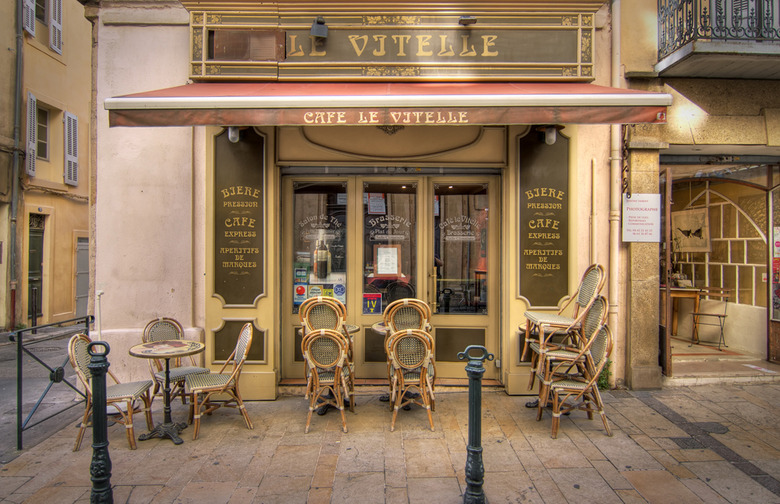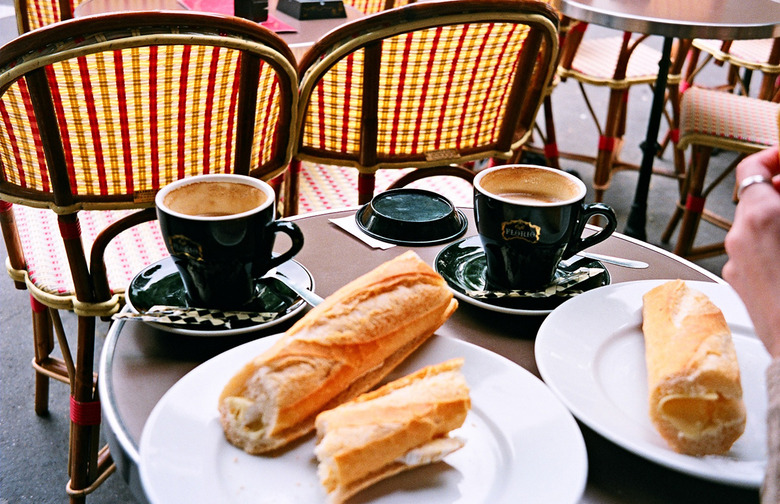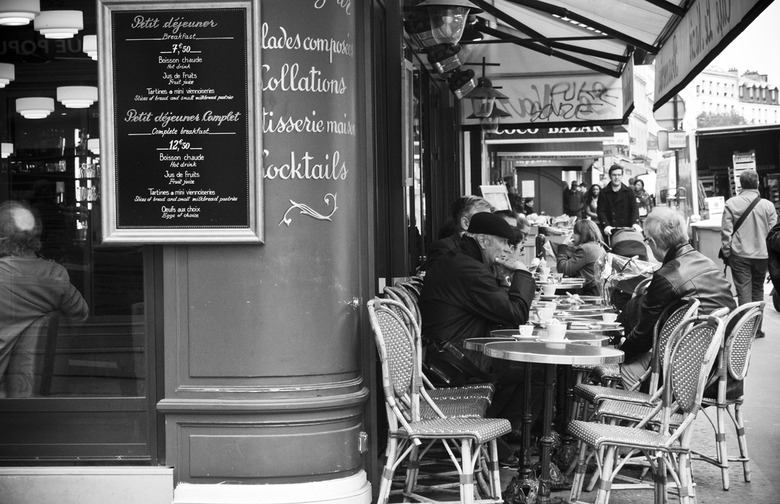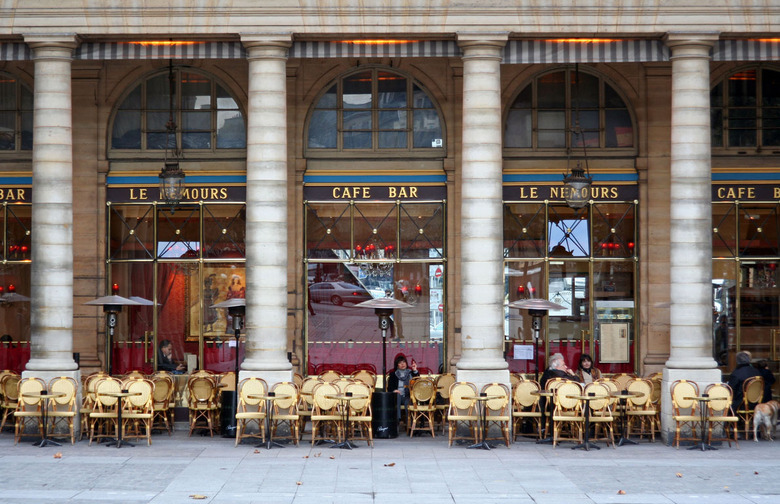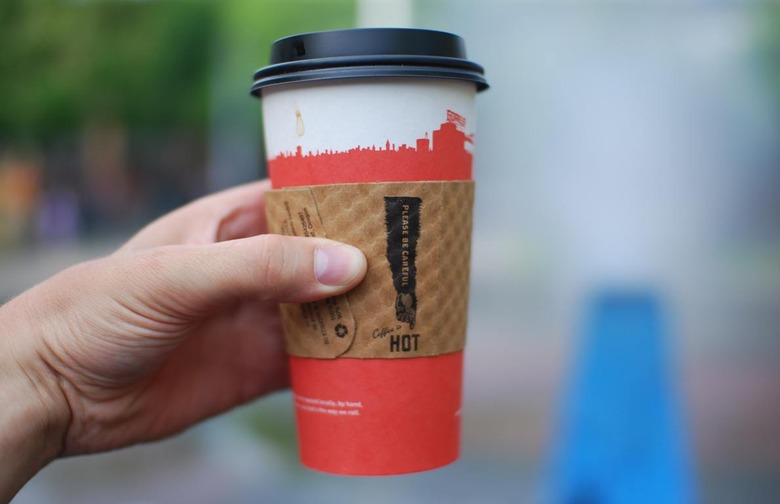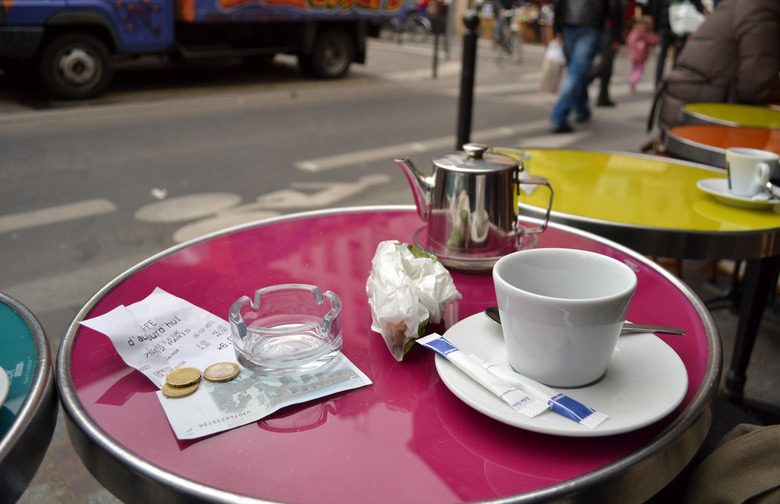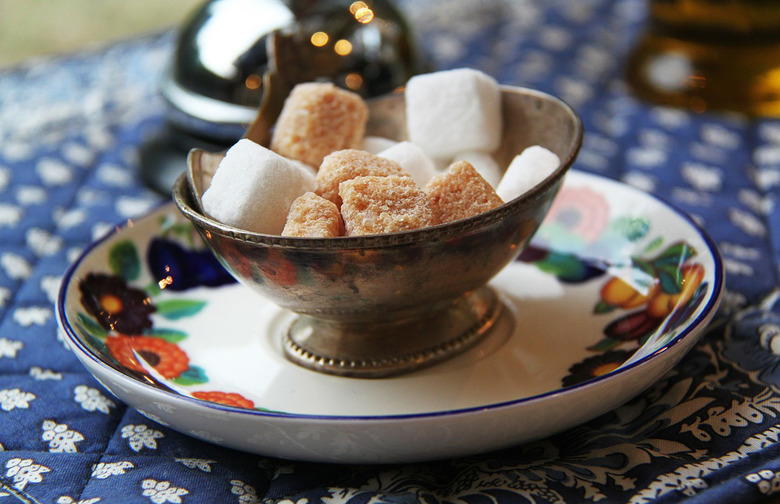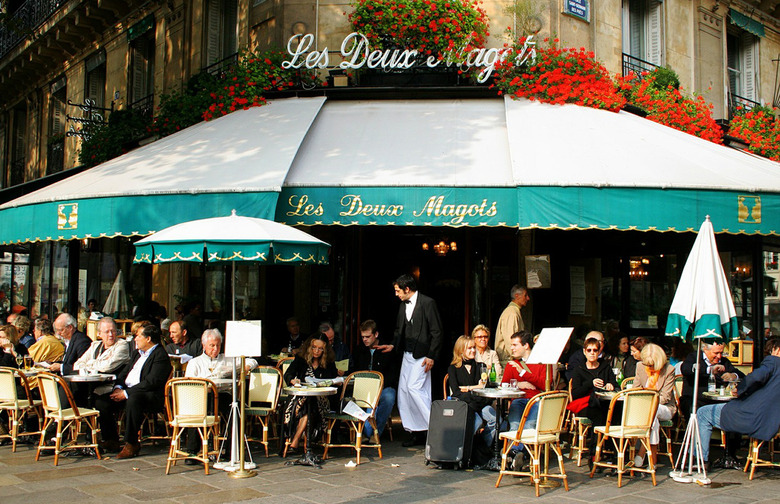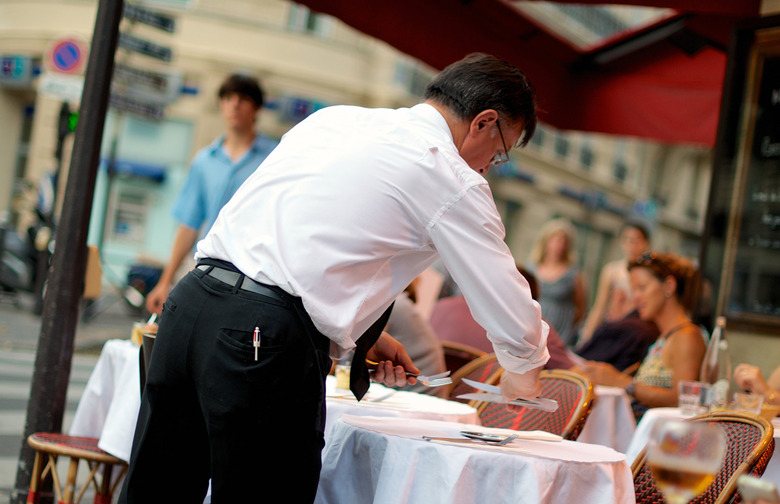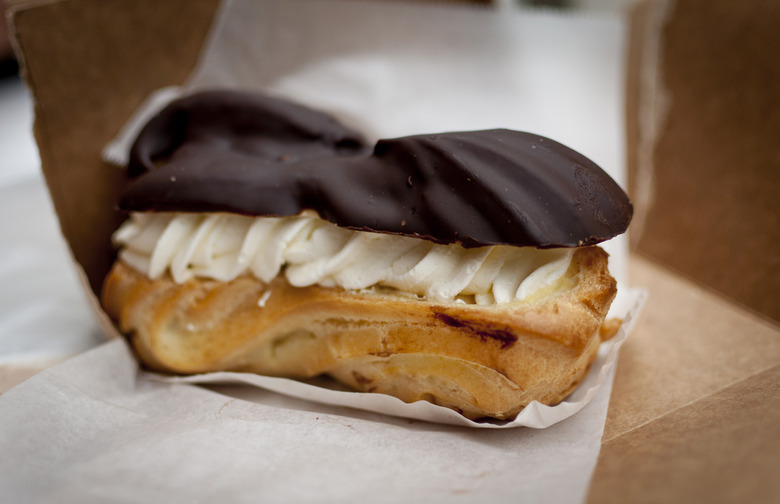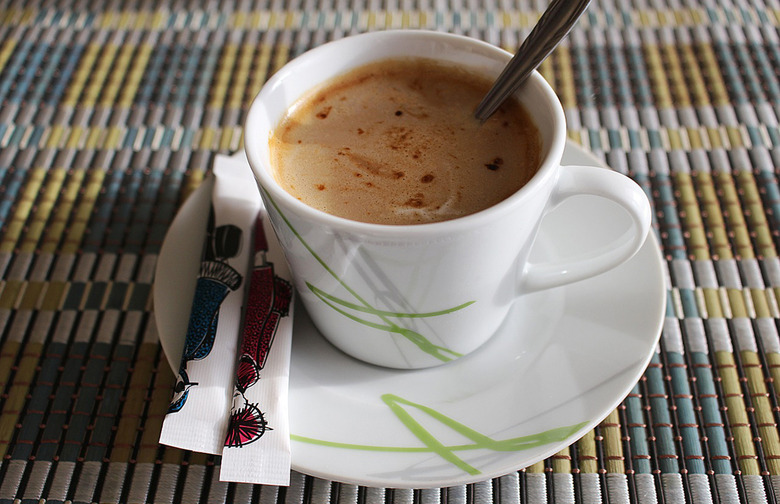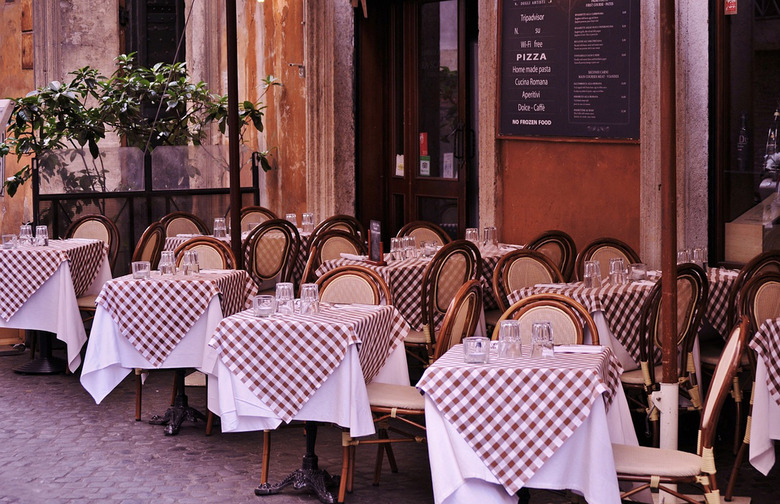10 Things You Need To Know About Ordering And Drinking Coffee In France
In 1825, the renowned gastronome, Jean Anthelme Brillat-Savarin, famously said, "Tell me what you eat, and I'll tell you who you are," and we suggest you use this as your entrée into the food culture of France. Starbucks may have made it to Paris, but the French are slow to embrace food or drink fads, and traditions that have endured for centuries are still part of the coffee culture in L'Hexagone. Knowing a bit about the culinary history of France will help you navigate the etiquette of ordering, drinking, and making coffee in France.
10 Things You Need to Know About Ordering and Drinking Coffee in France
Vive La Révolution du Café
Coffee, essential for everyday living now, didn't become a national drink until the 1800s. During this era, machines for grinding the beans and other equipment were invented, and a hydrostatic percolator exhibited at the 1855 World's Fair in Paris by Monsieur Loysel revolutionized coffee drinking in France. His improvements made coffee easier and cheaper to prepare at home and made it possible for cafés to produce up to 50,000 cups of coffee across Paris per day. This single change helped lower the cost of buying, grinding, roasting, brewing, and serving so that drinking coffee was within reach of everyone, no matter what his or her station in life.
Les Grains de Café
In France, les grains de café, or the coffee beans used to make coffee, are different from those in Italy and are more akin to the highly caffeinated coffee preferred in Turkey. That's because the French roast their beans with a higher percentage of robusta beans than arabica and this makes a stronger, darker coffee with a slightly bitter edge.
Les Mots de Café
Café has dual meanings in France, which can cause confusion for non-French speakers. On the one hand, un café is an espresso, le café is also where you go to drink un café, and un café noir, un express, un pétit café, and un pétit noir are all different ways of ordering a simple café. Once thing is certain however: when your café arrives, count on it being served in a tiny demitasse containing one strong shot of espresso; don't expect to order a half-caff, skim latte with caramel to go.
- Une café crème: This is what you want to order if you insist on drinking a cappuccino, which is Italian not French, because it's un café topped with foamed milk.
- Une noisette: Called a noisette because it resembles the light brown color of a hazelnut, this is an espresso with a dash of steamed milk and a bit of foam, similar to an Italian macchiato.
- Un allongé: Literally an elongated version of un café, this is a weaker espresso with double the amount of hot water.
- Un serré: For an even stronger cup, this comes with half the amount of hot water as a regular espresso.
- Un café américain: A weaker, filtered style of coffee that's not very easy to find, also called un café filtre.
- Un café déca, or just un déca: Short for un café décaféiné, this is also a rarity, but if you find a place that serves decaf, just put déca after your drink name (un café Américain déca) and it becomes an order for decaffeinated coffee.
A Place for Everything…
Does your high school French let you down whenever you try to order in a French restaurant? If you are unsure about the local customs and want to order coffee properly, quick shorthand for the level of service in a café is to check the table settings. If you see sugar bowls, silverware, and glasses on the tables and bar, they definitely offer seated, full-service coffee. On the terrace, things are a little trickier because cafés often offer coffee service alone and regular dining options. In general, it's wise to assume that silverware and glasses are reserved for guests ordering a meal, not just coffee, which means you should not sit there assuming you will nurse a single cup of coffee. If the table is empty and you're still unsure, here's a chance to practice your French; just check with the waiter. They will let you know what to do.
Café Versus Coffee Shop
Distinguishing between a café, which sells coffee, and a specialty coffee shop, can be confusing. A café is more formal and is the kind of place where guests are meant to linger over their coffee, maybe discuss the news of the day, or do a bit of people watching from a cozy window seat or outside. Cafés offer table seating but also often have an elegant bar with a counter where you can order a quick express and drink it standing. This is not true in a shop, however. A shop, is designed just for a quick pick-me-up drunk while standing up.
French Rush Hour
For a mad coffee rush hour in France, look for specialty coffee shops at around 10 a.m. These are quick places to grab un café from the bar where you stand and drink your coffee and then hurry back to your office. These shops are the few places you can order un café à emporter, or to go, and they will most likely have American-style to go cups.
I’ll Have Mine on the Side, Please
Ordering things on the side is not as simple as you might think, thanks to French vocabulary and grammar. If you want to have your milk on the side, order un lait supplémentaire, and you like milk with your drip coffee but on the side, try asking for it by saying, "Je voudrais un café allongé avec du lait à côté;"it may sound a bit complicated but it will get the point across. Had you simply ordered un peu du lait, you might have been served a milky coffee and that just won't do in France.
Just a Spoon Full of Sugar
The French have a sweet tooth and rarely will you find a table setting devoid of familiar sugar cubes. However, if it's not on the table, it definitely will arrive with your coffee order, either as cubes on the side of the saucer or in long, thin paper envelopes. If for some reason you want to request more sugar, you may say, "Je voudrais plus de sucre, s'il vous plait" and your waiter will return with a tiny plate with two sugar cubes. Ordering artificial sweetener, or un édulcorant, probably won't be met with success, but you may certainly try. If you want to tap your inner child, try faire un canard by dipping a sugar cube in your coffee, letting the cube slowly absorb the coffee and turn brown, and then either sucking the coffee from the cube or just popping the cube into your mouth for an explosion of flavor.
Location Matters
Here's a secret that can potentially save you quite a few sous if you're the impatient type who can't sit still for long. In France, cafés often charge different prices for your cup of coffee depending on the level of service you request. For example, if you are on a tight budget but need a caffeine fix, greet the café staff by saying, "Bonjour, je voudrais un café au bar s'il vous plait" and they will take you to the bar where you can get a quick coffee, drink it while standing, and also save yourself about half the price of a full-service cup. On the other hand, if you aren't in a rush, want to soak up a bit of local atmosphere, and don't mind paying full-price, feel free to dine inside or on the terrace; just tell your host, "Je voudrais un café sur place, s'il vous plait."
Mind Your Manners
Proper greetings and table manners are ingrained in the French from the time they are toddlers and they expect the same courtesy from visitors. Just remember that from the moment you enter any restaurant, inn, café, restaurant, or shop, it's proper to acknowledge the owner, sales staff, waiters, counter help, etc. Greet them by giving eye contact and politely saying, "Bonjour monsieur" if it's a man, "mademoiselle" if it's a young woman, or "madame" if the woman is married and/or older than in her twenties. When you leave, it's polite to say goodbye with "au revoir" followed by "monsieur," etc. And it goes without saying you should always say please, "s'il vous plait," before ordering, and "merci" when you are served. (A Paris café made headlines not long ago by posting a price list reading "'Un café' 7 €; 'Un café, s'il vous plain' 4.25 €; 'Bonjour, un café, s'il vous plait" 1.40 €.")
Timing Is Everything
Dining in courses is standard for lunch and dinner, and unlike the American custom of serving dessert with coffee, coffee is considered a separate course at the very end of the meal. And it's never drunk during the meal or with milk after breakfast time.One coffee drink definitely worth investigating is café Calva; just pour a bit of quality Norman Calvados into a nearly finished cup of coffee and you have the perfect end to a meal.
Timing…It’s Essential
Knowing when to order your preferred coffee drink is just as essential as knowing the name, otherwise you risk being served the wrong drink or being labeled a clueless tourist. Breakfast, or petit déjeuner is the only meal when café au lait, heated just so, is served — and it's only served in the home — you won't see it on café menus, ever. Assorted jams, a fresh baguette (or a day old one that's perfect for dunking) slathered with sweet cream butter, and a warm bowl of café au lait may seem Spartan to most Americans, but this simple breakfast will later be followed by a hearty lunch, so a good, strong coffee will start the day off on the right track. Hotel breakfasts often contain croissants, but it is uncommon for French people to eat croissants at every breakfast. They are a luxury reserved for the weekends when people have time to fetch freshly baked ones from the boulangerie.
You Say Potato…
Going for a cup of coffee and placing your order is different than in America, but here are a few phrases that will help you communicate with fellow French coffee-lovers. To invite someone to go with you for a cup of coffee you say, "Est ce que vous voulez prendre un café avec moi?" If you are already familiar with your waiter, you may order by saying, "Je prends un café, s'il vous plait," or the more formal expression is, "Je voudrais," which is "I would like..." Just remember not to use the familiar forms of tu until you are certain you can do so and use the more formal form of vous when speaking to your new French coffee friend.
